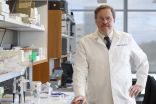"It is widely thought amongst the clinical community that there is no association between family history and development of glioma. Because we know very little about the contributing genetic factors, when cases occur in two or more family members, it is viewed as coincidental," said Dr. Melissa Bondy, associate director of cancer prevention and population sciences at the NCI-designated Dan L. Duncan Cancer Center at Baylor College of Medicine and lead author of the report that appears in the Journal of the National Cancer Institute today. "By understanding more about the genetic link, we hope that one day we can improve treatments and preventive strategies for those with a family history of glioma."
Bondy estimates that approximately five percent of brain tumors run in families.
The study was conducted through the Gliogene Consortium, a collaborative group of familial brain tumor researchers from around the world, which is primarily supported with funding from the National Cancer Institute.
"I have been researching familial glioma for nearly 30 years, and this study is really the first time we have had a hit when it comes to identifying a gene that is potentially associated with predisposition to the disease," said Bondy, principal investigator of the Gliogene Consortium.
The Gliogene Consortium recruited 435 families in which glioma occurred from 14 centers in the United States, Sweden, Denmark, The United Kingdom and Israel. The recruitment occurred between 2007 and 2011 while Bondy was on faculty at The University of Texas MD Anderson Cancer Center. She joined the Baylor faculty in September 2011.
Once at Baylor, Bondy collaborated with experts in the College's Human Genome Sequencing Center to advance research of the genetics of the disease.
The team applied an advanced method of genetic testing called whole exome sequencing (which determines the DNA sequence of the exons, or protein-coding regions, of tens of thousands of genes simultaneously) on 90 individuals with glioma from 55 families enrolled in the Gliogene project.
Dr. Matthew Bainbridge, post-doctoral associate in the Human Genome Sequencing Center at Baylor and first author on the report, combed through the sequencing data and identified mutations in a gene called POT1, which was present in two of the families.
In one family, six members harbored a mutation of POT1 that is rarely seen in other populations, and among them three developed glioma. In another family, six individuals carried a different mutation in the POT1 gene and two developed glioma.
They further validated the finding in a separate group of individuals and families with glioma in which they identified an additional mutation in POT1 in one family.
"We are just learning about the risk of cancer associated with POT1 mutations. Some of the other family members who carry the mutation may develop brain tumors later in life." said Bondy. "These members were younger than the ones who developed the disease."
The mutations in the POT1 gene are predicted to result in a disruption in a region of the POT1 protein that is important for its function at telomeres, the protective caps at the end of chromosomes.
"POT1 modulates the activity of telomerase, a highly regulated enzyme that lengthens telomeres" said Bondy, also a McNair Scholar at Baylor. "This is a very important process, and when the process is disrupted with a mutation in a gene like POT1, the telomeres elongate."
Although short telomeres have been implicated in a wide range of cancers, longer telomeres have previously been associated with some cancers as well, Bondy and Bainbridge noted.
POT1 also has recently been observed in familial melanoma in association with longer telomeres by another research team, which is not at all surprising to Bondy, as she has previously reported a higher incidence of melanoma in first degree relatives of glioma patients than expected.
In the Gliogene study, the mutations were associated with oligodendroglioma, a lower grade glioma, which is more sensitive to radiation therapy.
"We will do additional research to see how frequent the mutation is in familial gliomas and if it is also associated with higher grades of the disease," said Bondy.
"As we learn more about POT1 and familial glioma, it may help us in counseling families about glioma risk or possibly point the way to new therapeutic targets," said Dr. Sharon Plon, a co-author on the study who is a medical geneticist at Baylor. "This is the beginning of defining the genes for familial glioma."
Bondy and her team suspect there could be a number of other genes associated with familial glioma.
INFORMATION:
The Gliogene Consortium is still actively recruiting patients and their family members to be included in future research. For more information on how to participate, contact Georgina Armstrong at georgina@bcm.edu or 713-798-2951.
Collaborators on this study included researchers from Yale University School of Medicine, New Haven, Connecticut; Brigham and Women's Hospital, Boston, Massachusetts; Case Western Reserve University School of Medicine, Cleveland, Ohio; Georgia State University School of Public Health, Atlanta, Georgia; Duke University Medical Center, Durham, North Carolina; Gertner Institute, Chaim Sheba Medical Center, Tel Hashomer; Sackler School of Medicine, Tel-Aviv University, Tel-Aviv, Israel; Danish Cancer Society, Copenhagen, Denmark; Institute of Cancer Research, Sutton, Surrey, United Kingdom; Mayo Clinic in Rochester, Minnesota; Memorial Sloan-Kettering Cancer Center in New York, New York; North Shore University Health System in Evanston, Illinois; University of California in San Francisco; University of Alberta in Edmonton, Alberta, Canada; The University of Southern California Keck School of Medicine in Los Angeles; The University of Texas M.D. Anderson Cancer Center; Geisel School of Medicine at Dartmouth in Hanover, New Hampshire; The University of Arizona Cancer Center in Tucson and the Umeå University in Umeå, Sweden.
Funding support for this study was provided by National Institutes of Health (R01CA119215, R01CA070917, R01CA52689, P50097257, R01CA126831, U54HG003273, P30CA125123, K23CA158148); the McNair Medical Institute; the Population Sciences Biorespository at Baylor College of Medicine; the American Brain Tumor Association; the St. Baldrick's Foundation and The National Brain Tumor Society.



